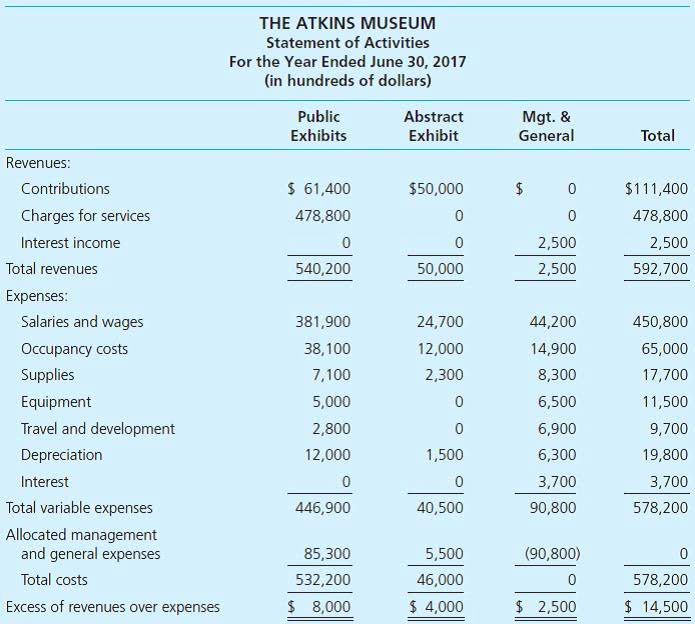
If a company owns between 20% and 50% of the common shares of another company, it will usually use the equity method. In the PepsiCo example, investors who are invested solely in PepsiCo may only be interested in the financials of PepsiCo, not the individual subsidiaries. The consolidation of the financial statements gives investors and lenders a clearer picture of how the corporation as a whole is performing and whether it is a safe investment. Both large and small businesses should have regularly updated financial statements. However, while some, such as small businesses, may not be required by law to have financial statements updated regularly, it pays dividends to have them when it comes to evaluating the overall financial health. It’s not only essential to learning consolidated vs unconsolidated the financial health of your business, but it provides valuable insight to shareholders and employees.

What Is a Consolidated Financial Statement?
- It puts all your financial data at your fingertips so you can create consolidated financial statements with ease.
- In consolidated financial statements, intercompany transactions need to be eliminated before a final statement can be prepared.
- Subsidiary holdings must be shown as a stock asset on the parent company’s financial statements and shareholders’ equity on the subsidiary’s financial statements.
- The basic difference between the balance sheet and a consolidated balance sheet is the inclusion of another company (which we call a subsidiary) in a consolidated balance sheet.
- For example, if you own a plumbing company and a plumbing supply shop, you may need either a consolidated or combined financial statement.
This document communicates how the equity components of the entity have changed, providing insight into the financial dynamics affecting shareholder value. A company is a subsidiary when it is partially or wholly owned by a parent company. Such a company can be formed by the parent company or created when one company buys another.

Why Choose Combined Financial Statements
- All of the financials are easily seen for each one in a combined financial statement.
- The cost and equity methods are two additional ways companies may account for ownership interests in their financial reporting.
- The consolidated financial statements consist of the income statement, Statement of Financial Position, Statement of Cash Flow, and Statement of Change in Equity.
- One of the most common mistakes made with essential processes like consolidation is starting too late.
- The final financial reporting statements remain the same in the balance sheet, income statement, and cash flow statement.
Too many finance teams are still using spreadsheets and manual processes for consolidation. While the time-tested spreadsheet is dependable, it’s far from the most effective method. Adopt and use dedicated consolidation platforms like Prophix One and you’ll fly through https://www.bookstime.com/articles/how-to-calculate-fifo-and-lifo this process in a fraction of the time you would otherwise. One column will define the amounts registered on the sheet—such as specific assets or liabilities—while other columns will show the amounts themselves, usually in millions of dollars over a period of a few years. Depending on your jurisdiction, you’ll also need to prepare necessary disclosures and attach them to the final consolidated balance sheet. Private company usually prepare non-consoliate financial statement due to its simple structure.
Notes to the consolidated income statement
This section often has significant differences between consolidated balance sheets and their unconsolidated counterparts. Usually, this provides additional context about financial statements that investors, partners, and other interested parties rely on to understand the figures they’re looking at. Non-consolidated financial statements are the separated financial statement of each individual company. It is the same to consolidate financial statements, consist of the Income statement, Statement of Financial Position, Statement of Cash Flow ad Statement of Change in Equity. Generally, 50% or more ownership in another company defines it as a subsidiary and gives the parent company the opportunity to include the subsidiary in a consolidated financial statement. In some cases, less https://x.com/BooksTimeInc than 50% ownership may be allowed if the parent company shows that the subsidiary’s management is heavily aligned with the decision-making processes of the parent company.

What Is Consolidated Versus Separate Financial Statement?
It may also provide additional context about the specific ownership structure involved. Crush complexity, reduce uncertainty, and illuminate data with access to best-in-class automated insights and planning, budgeting, forecasting, reporting, and consolidation functionalities. Prophix is a private company, backed by Hg Capital, a leading investor in software and services businesses. More than 3,000 active customers across the globe rely on Prophix to achieve organizational success. The consolidated statement of changes in shareholders’ equity is commonly required as part of the financial disclosures an entity produces, either quarterly or annually. It outlines the changes in the entity’s equity over the reporting period, including net income, dividends, issuance or repurchase of shares, and other equity adjustments.
- A consolidated financial statement takes the financial results of the subsidiaries and includes them in a single financial statement for the parent company, as if the parent company and the subsidiaries were one entity.
- And at the same time, there will be no change in the assets, liabilities, and shareholders’ equity.
- Each entity may have separate procedures and documentation methods, making it difficult to report on the big picture.
- The consolidation of financial statements integrates and combines a company’s financial accounting functions to create statements that show results in standard balance sheet, income statement, and cash flow statement reporting.
- A business needs to create a consolidated income statement under two conditions.
- If an organization is using consolidation accounting, then its balance sheets must be consolidated as well.


Trả lời